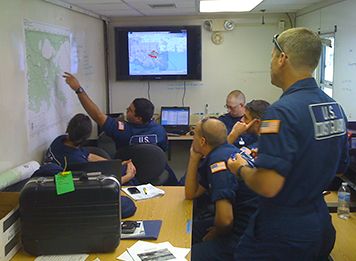How NOAA Responds to Oil Spills: Connections and Training
Making Connections
Many different organizations become involved in the response to major spills. Within the U.S., state, local, and federal government agencies may all have responsibilities to help. Outside of the U.S., representatives of different national governments may need to work together.
One of OR&R's activities is to find ways to help all these different representatives communicate effectively during a spill response. We provide technology and website support to help both on-scene and off-site scientists and responders share information during a spill.
You can visit IncidentNews, which offers news, photos, and other information about OR&R's scientific support for hazardous material spill response, or ERMA®, an interactive online mapping tool used by responders to centralize information during a spill and provide a quick visualization of the situation.
Teaching the Necessary Skills
In addition to conducting some of the response work ourselves, we also provide training and guidance for spill planners and responders who need to perform this work. This can take the form of training sessions and courses on our software products or the science of oil spills; field guides compiling practical, scientifically sound protocols and best practices; and guidance documents introducing and instructing on the use of our products and services.
We also travel to schools and colleges to demonstrate how oil spill response works, show children how to perform simple experiments to learn about oil spills, or lecture on spill response and related topics.
 An official website of the United States government.
An official website of the United States government. 
